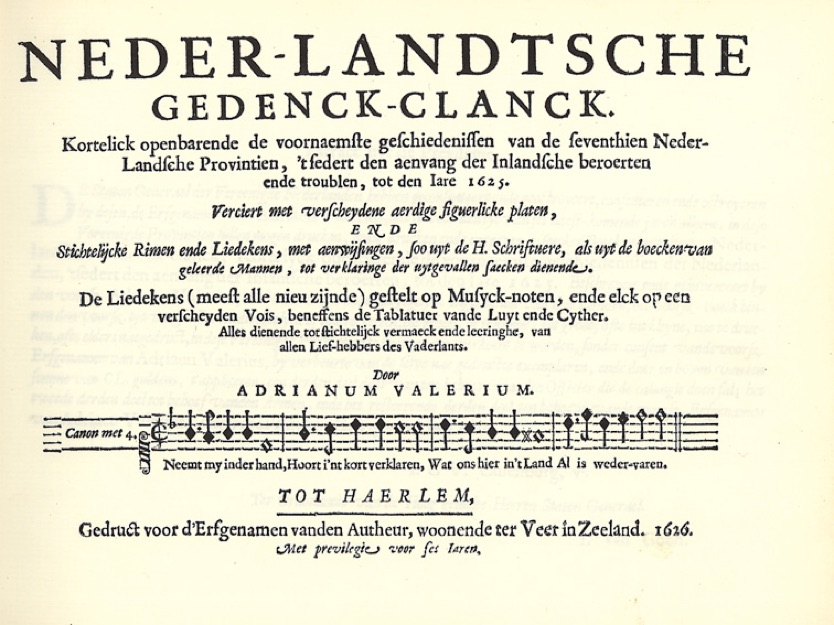
Paula Bär-Giese - soprano & Hans Meijer - lute
ADRIAEN VALERIUS Veere 1625 & JOAN BLAEU 1649 - Toonneel der Steeden
Valerius - Gedenck Clanck 1620-1625 ter Veer in Zeeland.
Adriaen Valerius probably wrote his Nederlandtsche Gedenck-clanck during the years 1620-1624. It is not likely that his death on 27 January 1625 brought a sudden end to his manuscript, for the text does not seem to break off. The Nederlandtsche Gedenck-clanck is not a song book, but a history book chronicling the so-called Eighty Years' War between the Low Countries and Spain. Nevertheless Valerius interrupted the text at no less than 76 points to include a song, together with pieces for the lute and cittern on the same melodies. The main sources of Valerius' notation of the melodies seem to include the Dutch song book Friesche Lust-hof, original polyphonic music by Dowland and Gastoldi , and instrumental works from The First Booke of Consort lessons by Thomas Morley. Many versions of the melodies would have circulated in manuscript, and only a fraction has survived. It would seem out of the question that all Valerius' sources can ever be traced. The lute settings are not intended as accompaniments but as independent instrumental pieces. Valerius gathered them from various instrumental sources. Only two concordant settings could be traced, and these were found in a manuscript-the Thysius Lute Book - which most probably could not have been consulted by Valerius. The notation of the concordant pieces in the two sources must have been based on a common source which can no longer be traced. In 22 other cases, however, related settings were found in several sources, making it clear that we are dealing with notations of pre-existing lute settings. In a few cases Valerius was apparently unable to find a suitable setting and therefore supplied one from his own hand or that of a musical friend. In seven cases the pieces deviate so much from parallel settings that we may presume Valerius to be the composer. Moreover, these settings are very similar to the cittern pieces, of which I presume Valerius (or an associate) to be the composer. The musical example on pages 143-144 demonstrates the concordance of melody, lute and cittern settings of the song Merck toch hoe sterck (no. 64), a concordance which lends unity to this group of seven songs. The assumption that the cittern settings were the work of Valerius or a musical adviser is based upon the fact that in all cases the melody notated by Valerius has been strictly followed; if these settings had been made separately like most of the lute settings, this would surely not have been the case.
 Foundation Musick's Monument
Foundation Musick's Monument